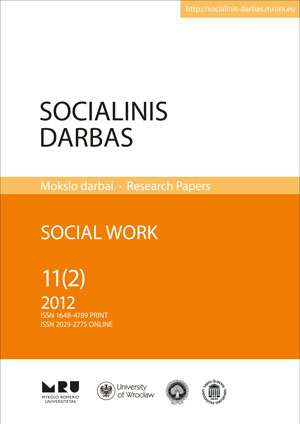Elektroninės žiniasklaidos formuojami probleminės šeimos stereotipai
Stereotypes of Families at Risk in Electronic Mass Media
Author(s): Giedrė Bilbokaitė, Jolanta PivorienėSubject(s): Social Sciences
Published by: Mykolas Romeris University
Keywords: families at risk; e-media; stereotype
Summary/Abstract: Families at risk face many problems. Public opinion about these families usually is formed by mass media which not only provides information, but rather interprets social reality through information. Mass media is a strong tool in forming stereotypes which prevent some social groups from equal participation in mainstream society. By definition, stereotypes are statements that proceed specific stages and influence the stereotyped objects. Families at risk are one of the most vulnerable groups sensitive to the negative influence of stereotypes. The aim of the article is to find out what stereotypes about families at risk are formed by e-media in Lithuania. Two data collecting techniques were used. At the first stage a survey of public opinion was done. At the second stage—content analysis was used for the texts in e-media. Survey data revealed the respondents’ opinion that e-media forms public opinion in general, and negatively affects specific social groups. Families at risk were in the second place among the social groups which are stereotyped in e-media. According to respondents, the most often prevailing stereotypes in e-media are: “families live in poverty,” “have legal problems,” “members of the family use alcohol and other drugs,” “one or both parents are unemployed,” “children are neglected.” The most often used stereotypes in the texts of e-media are: “there is violence in the families,” “members of the family use alcohol and other drugs,” “children are neglected.” Content analysis allowed finding out a combination of stereotypes in the e-media texts: usually more than one stereotypical statement is found in the same text. Quantitative and qualitative data analysis showed that information about families at risk in e-media proceeds three stages of stereotyping: levelling by separating specific traits from the object; strengthening by emphasising only these traits and neglecting others; assimilation by providing accumulating info of the stereotyped object. Thus e-media forms negative stereotypes about families at risk, which affects the position of this social group in mainstream society.
Journal: Socialinis darbas
- Issue Year: 11/2012
- Issue No: 2
- Page Range: 315-326
- Page Count: 12
- Language: Lithuanian

